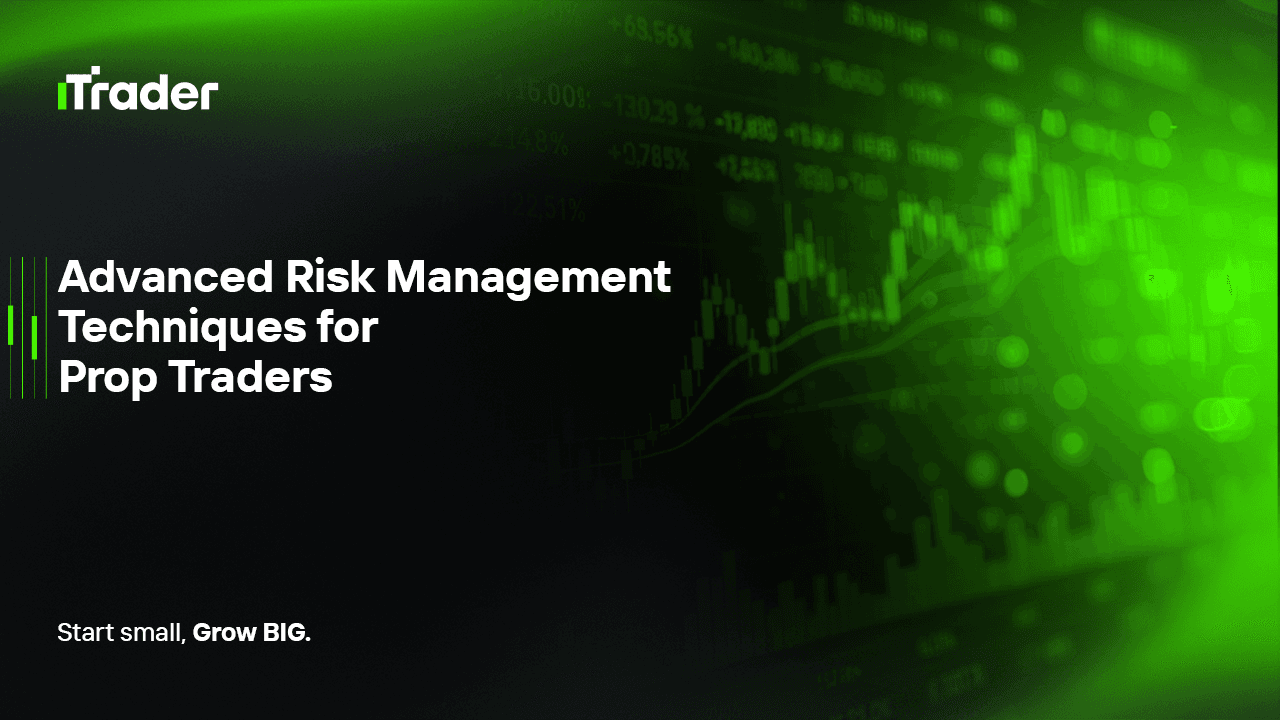2025-07-21
Trading for a proprietary firm differs significantly from retail trading, primarily in the approach to risk and responsibility. Managing someone else's capital under strict performance thresholds requires a more refined, systematic, and adaptive risk management framework.

In this blog, we break down the advanced techniques used by prop traders to control exposure, respond to changing conditions, and ensure long-term strategy survival.
AI Summary:
This blog outlines advanced-level risk management strategies specifically designed for professional proprietary traders. In volatile and uncertain markets, preserving capital and maintaining consistent performance require more than basic tools. We explore dynamic position sizing, correlation-aware exposure, trade clustering, adaptive drawdown controls, risk-of-ruin analysis, and Monte Carlo simulation, among other modern methodologies. These approaches help traders navigate institutional expectations, reduce structural risks, and develop robust trading systems.
For prop traders, the number one priority is not just generating profit, but avoiding destruction. In a high-risk environment, the following principles are fundamental:
Basic fixed-lot or fixed-percentage sizing is not enough for advanced trading. Instead, more adaptive approaches are used:
Adjusts trade size based on current market volatility.
Formula:
javaCopyEditPosition Size = (Risk Capital per Trade) / (ATR * Multiplier)
Adjusts position size based on recent equity curve performance.
Prop traders often run multiple strategies and instruments simultaneously, making correlation management essential:
Measures how similar different strategies respond to market conditions.
Losses don’t always occur randomly; they often form clusters. These are referred to as “structural drawdowns.”
Use psychological and statistical limits to manage open exposure.
RoR calculates the likelihood that a trading strategy will completely deplete capital.
iniCopyEditRoR = [1 - (B/A)] ^ A
Since market results are rarely linear, Monte Carlo simulation helps:
While some firms impose hard exposure caps (e.g., 5 lots total), advanced traders apply:
Dynamic caps based on real-time risk conditions.
Risk control must account for external conditions, not just internal metrics.
Top proprietary traders recognize that mental state is part of risk exposure.
Defend against overconfidence, revenge trading, confirmation bias
Advanced prop trading requires Order Management Systems (OMS) and Risk Management Systems (RMS):
Success in proprietary trading isn’t just about finding profitable strategies—it’s about managing risk with surgical precision. Beyond basic stop losses and 1% rules, serious traders employ techniques like correlation analysis, volatility-adjusted sizing, trade clustering, adaptive drawdown thresholds, and Monte Carlo simulations to build resilient systems.
Ultimately, the goal is not just to survive, but to thrive with consistency, clarity, and emotional control, even in the most unpredictable market environments.
2025 Ай Трейдер Глобал ХХК | Компанийн бүртгэлийн дугаар: 15962
Ай Трейдер Глобал ХХК нь Комор улсын Анжуан арал дахь Мутсамуду хотын Хамчакод байрлалтай. Тус компани нь Коморын Үнэт Цаасны Хорооноос (Securities Commission of the Comoros) олгосон L15962/ITGL дугаартай тусгай зөвшөөрлийн хүрээнд үйл ажиллагаа явуулдаг.
Ай Трейдер Глобал ХХК нь “iTrader” нэрийн дор үйл ажиллагаа явуулдаг бөгөөд (Форекс) арилжааны үйл ажиллагаа явуулах эрхтэй. Компанийн лого, барааны тэмдэг, вэбсайт нь зөвхөн Ай Трейдер Глобал ХХК компанийн өмч юм.
Ай Трейдер Глобал ХХК -ийн охин компани болох : iTrader Global Pty Ltd, Австралийн компанийн бүртгэлийн дугаар (ACN): 686 857 198. Энэ компани нь Opheleo Holdings Pty Ltd компанийн албан ёсны төлөөлөгч бөгөөд Австралийн санхүүгийн үйлчилгээний төлөөлөгчийн дугаар: 001315037 -тай. Австралийн санхүүгийн үйлчилгээний лицензийн дугаар: 000224485 -тай Level 1, 256 Rundle St, Adelaide, SA 5000 хаягт байршдаг. Анхааруулга: Энэ байгууллага нь энэхүү вэбсайт дээр болон дамжуулан арилжаалагдаж буй санхүүгийн (арилжааны) хэрэгсэл нийлүүлэгч биш бөгөөд ямар нэгэн хариуцлага хүлээхгүй болно.
Эрсдэлийн сэрэмжлүүлэг: CFD арилжааны хөшүүргийн улмаас хөрөнгөө хурдан алдах өндөр эрсдэлтэй тул бүх хэрэглэгчдэд тохиромжгүй байдаг.
Фанд, CFD болон бусад өндөр xөшүүрэгтэй арилжаа нь хэрэглэгчээс нарийн төвөгтэй ойлголтуудын талаар тусгай мэдлэг шаарддаг. Хөшүүрэгтэй арилжаанд оролцогчдын 84.01% нь алдагдал хүлээдгийг судалгаанууд харуулдаг тул хөшүүрэгтэй арилжаанд орохоос өмнө хөрөнгөө алдах маш өндөр эрсдэлтэй болохыг анхаарна уу.
iTrader нь аливаа иргэн, хуулийн этгээдийн өмнө xөшүүрэгтэй арилжааны эрсдэл, алдагдал, бусад хохирлыг бүхэлд нь хариуцахгүй болохыг мэдэгдэж байна.
Энэхүү веб сайтын мэдээ, мэдээлэл нь зөвхөн мэдлэг түгээх зорилготой тул хэрэглэгч та бие даан шийдвэр гаргана уу.
Хязгаарлалт: iTrader нь вэбсайт болон үйлчилгээгээ тухайн орны хууль тогтоомж, дүрэм журмаар хориглосон орнуудад оршин суугчдад чиглүүлдэггүй. Хэрэв та энэхүү вэбсайтыг ашиглахыг хориглосон оронд байгаа бол вэбсайт болон үйлчилгээг ашиглахдаа тухайн орны хууль тогтоомжид нийцэж байгаа эсэхийг шалгах үүрэгтэй. iTrader нь вэбсайтынхаа мэдээлэл бүх оронд тохиромжтой эсэхийг баталгаажуулдаггүй.
Ай Трейдер Глобал ХХК нь зарим улс орны иргэдэд үйлчилгээ үзүүлэхээс татгалздаг болно. Жишээлбэл: АНУ, Орос, Бразил, Канада, Израйл, Иран.